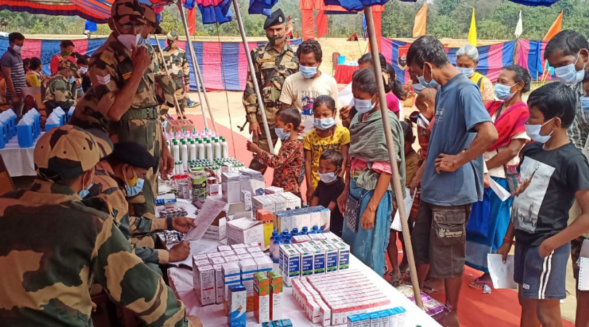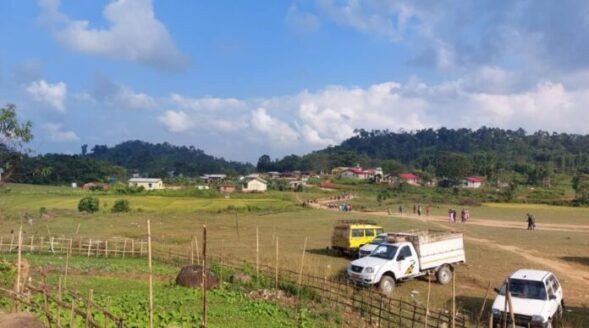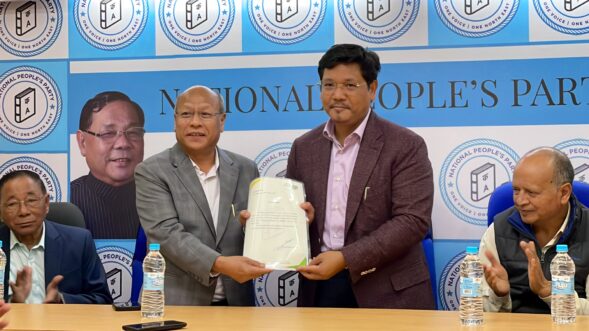
Early November marked the bustling heart of Delhi’s Pragati Maidan coming alive with the second edition of the Mega food event ‘World Food India 2023.’ It was a global gathering, attracting attendees from all corners of the world, including the state of Meghalaya, India. As the diverse group of visitors from Meghalaya ventured into the Indian capital, they were in for a stark contrast that extended beyond culinary delights.
In Meghalaya, the land of rolling hills and pristine landscapes, the mornings often greet residents with a gentle, cool fog. But in Delhi, the same time of day was enveloped in smog, so thick that even the most iconic landmarks disappeared into the hazy horizon. The stark difference in weather conditions was accentuated by the urgency of wearing masks, a necessity for both locals and visitors alike. Meghalaya’s crisp, clean air had left them unprepared for the dense smog that hung over Delhi.

According to data from the Swiss Group IQAir, Delhi had the unfortunate distinction of topping the list of the world’s most polluted cities. With an Air Quality Index (AQI) of 483, and some monitoring stations recording an AQI of 551, Delhi had, quite ironically, established itself as the “topper” in the wrong list. It was a dubious honour, one that showcased the city’s struggle with the toxic repercussions of urbanisation. New Delhi remained the most severely affected city globally, followed by Lahore in Pakistan and Kolkata in India.
The news of Delhi’s ongoing air quality crisis had even prompted the National Green Tribunal (NGT) to examine the psychological impact of deteriorating air quality. Various government authorities, including the Union Ministry of Environment, Forest and Climate Change, and the All India Institute of Medical Sciences Director, were summoned to provide responses.
In a bid to combat the escalating air pollution, the Commission for Air Quality Management (CAQM) invoked Stage IV of the Graded Response Action Plan (GRAP), leading to an immediate ban on the entry of trucks and a transition to a work-from-home model to curtail further air quality degradation.

As the Meghalaya contingent navigated the smog-filled Delhi streets and experienced the need for masks to protect their respiratory health, they could not help but reflect on the stark contrast to their hometown. A Meghalaya visitor expressed, “It is a little difficult to assess the implications now. We are, however, wearing masks whenever we go outside the halls. The weather in Delhi is not excessively hot or cold; in that way, it is pleasant. But yes, we will get to know about the health implications later perhaps.”
In Delhi, due to environmental circumstances, nobody is a “non-smoker”. A senior lung specialist from Medanta Hospital, Dr Arvind Kumar, recently pointed out, that the severe air quality is equal to about 25–30 cigarettes in terms of damage to the body. In a city where even breathing felt like an involuntary smoke break, the statement resonated with the residents and visitors alike.
Another visitor shared, “Yes, it is difficult to breathe a bit. We have to be cautious at all times. In Meghalaya, we never had to worry about air quality.” The group from Meghalaya was accustomed to breathing clean, fresh air, and this drastic change was both unexpected and concerning.
Reflecting on the experience, they acknowledged the need for careful urban planning in Meghalaya. The visitors were well aware of the traffic conditions in their home state, where festivals or not, traffic jams were a common woe. As one visitor humorously noted, “The number of cars is more than the number of people, not literally!” The visitors recognised that with urbanisation came certain disadvantages, and they hoped that Meghalaya would embark on a well-thought-out journey towards becoming a “smart state.”
Their visit to Delhi came with additional surprises. On the night of November 3, an earthquake jolted Nepal, sending strong tremors that were also felt in Delhi. Social media reacted with a mixture of humour and caution. One Twitterati posted a meme that said, “I won’t die of pollution if I don’t go out” and added Amitabh Bachchan’s Kaun Banega Crorepati image with the caption, “You can participate from home too.” The meme served as a lighthearted reminder that while staying indoors might protect against pollution, it could not safeguard against natural disasters.
The experience of visitors from Meghalaya at the World Food India Programme was a lesson in contrasts, not only in air quality but in the unpredictable nature of life itself. It underscored the need for environmental awareness and preparedness, both in Meghalaya and the national capital. Their understanding in Delhi served as a stark reminder of the importance of environmental conservation and the need for sustainable urban development, even in the clean-air haven of Meghalaya. The contrasting change in weather and air quality left a lasting impression on the visitors, emphasising the importance of protecting the environment they called home while also encouraging responsible urbanisation.






